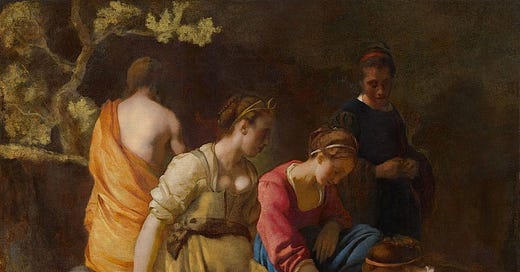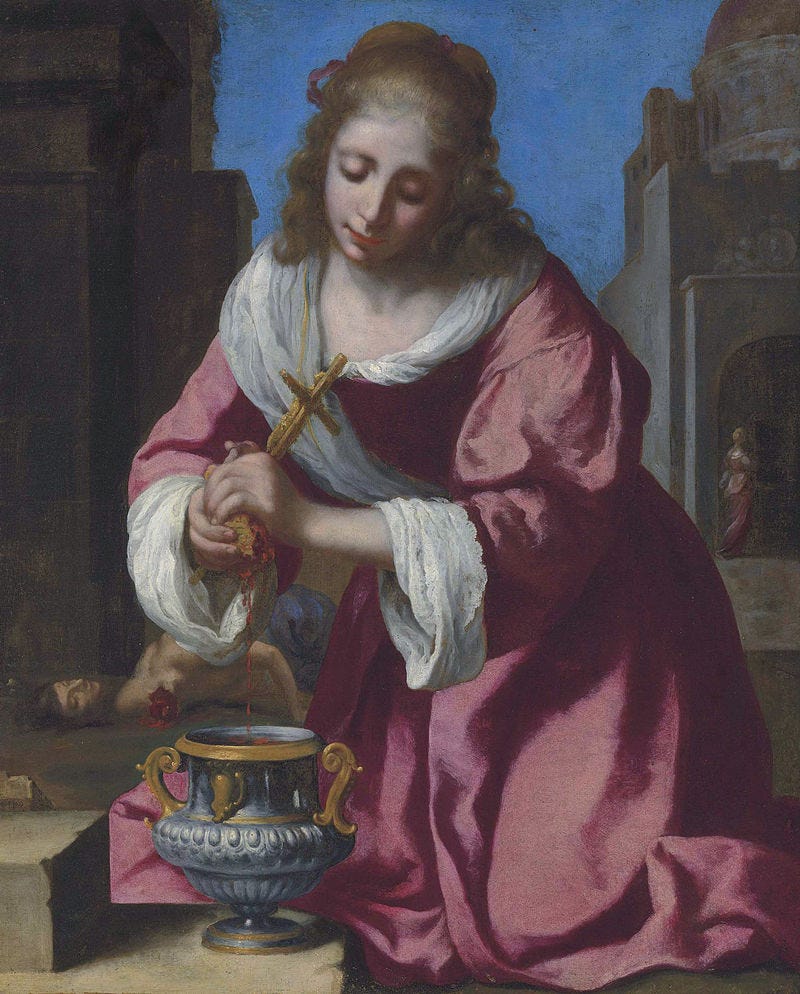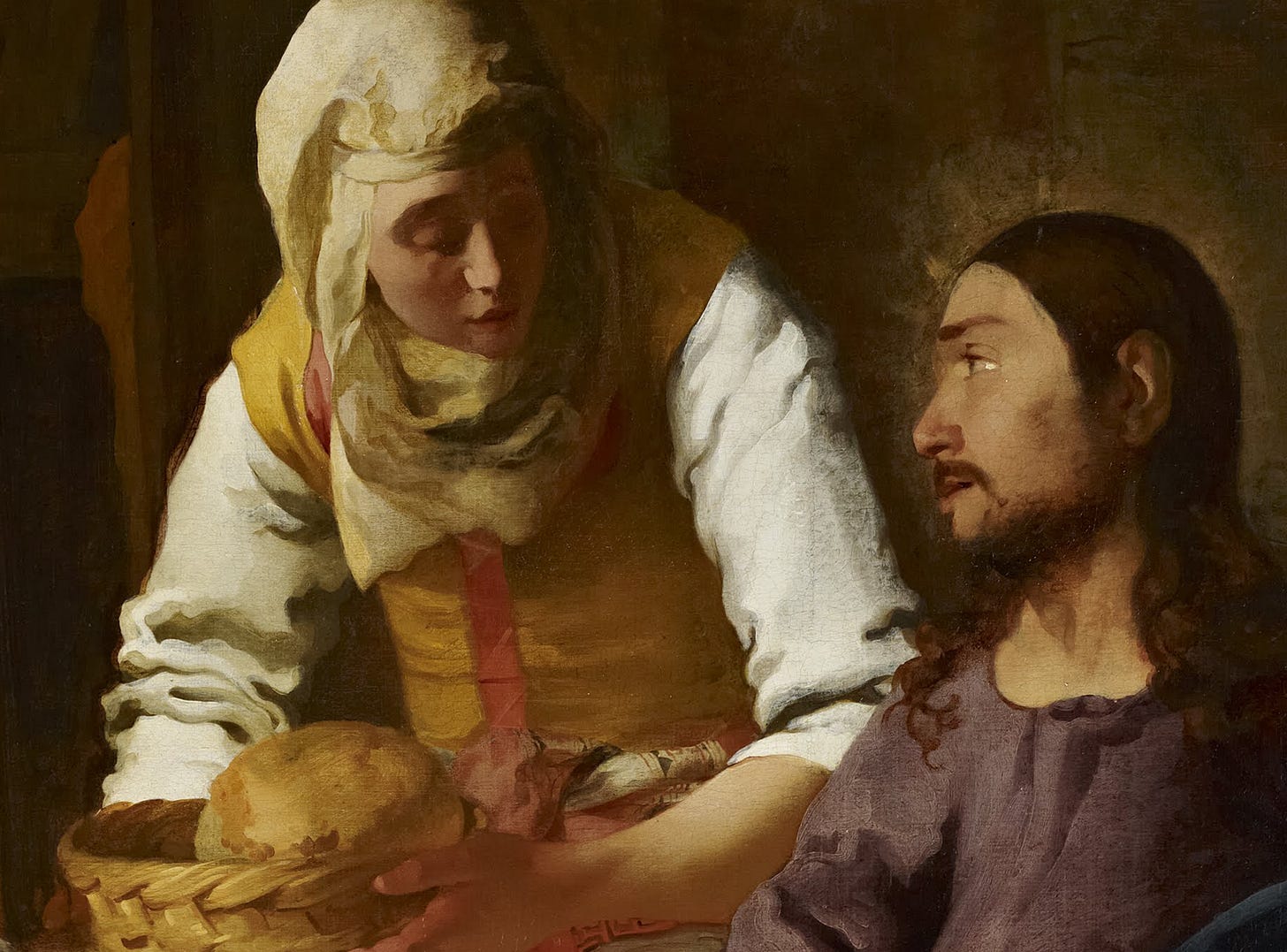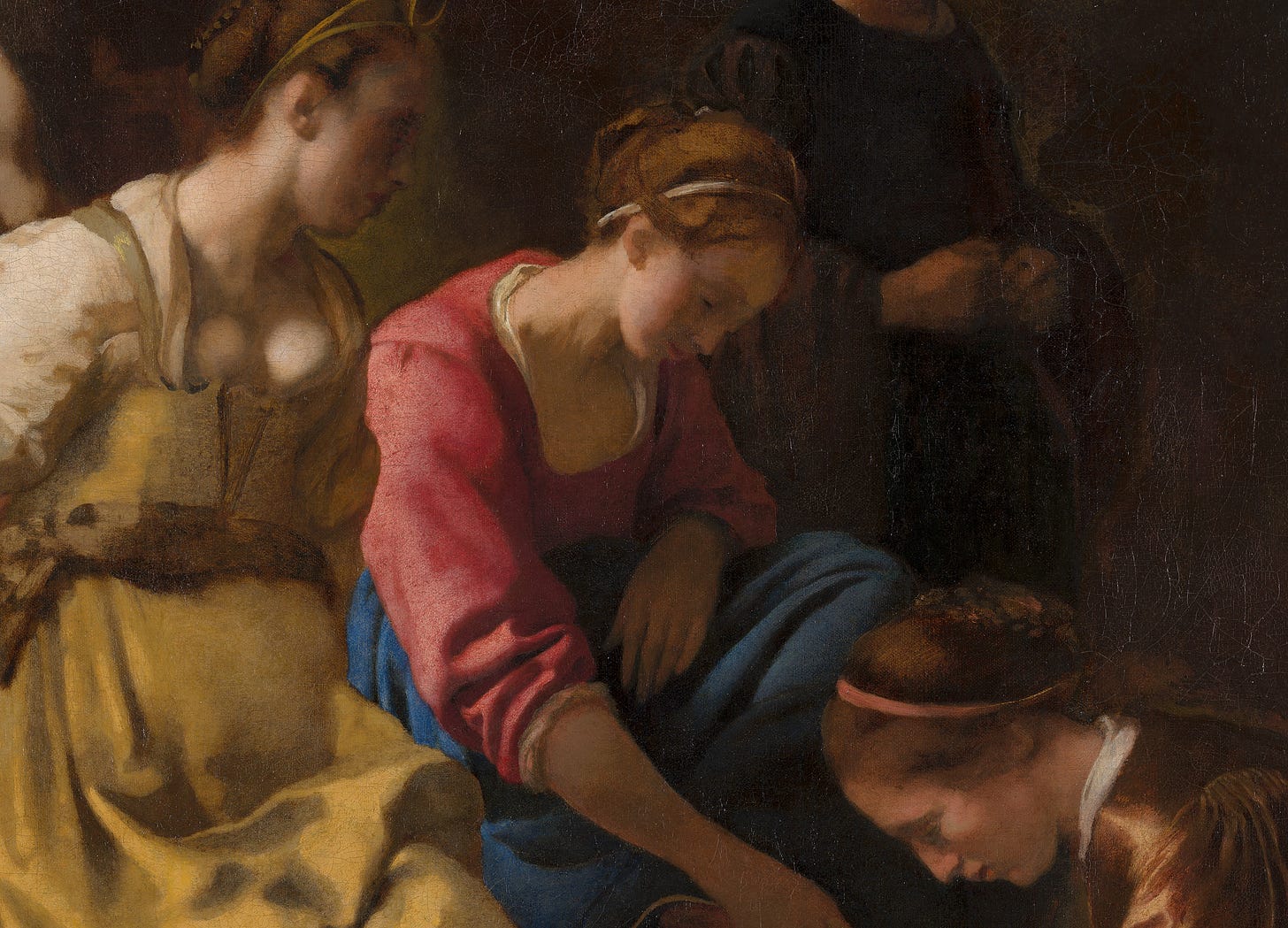The early years of Johannes Vermeer’s career as an artist are shrouded in mystery.
We do not know where he learnt to paint, or who he studied with, or which artists he may have admired from previous generations.
And as things stand, we have no known drawings or sketches from him in any medium - which means that we have almost no way of seeing how his style progressed over the years.
All we know for certain is that in 1656, the young artist released his very first signed and dated artwork - entitled “The Procuress”.
(And, incidentally, through the rest of his life Vermeer would only ever sign two more works - both of which featured in our last article on the great man, here)
Yet while the signature, dating, and general provenance of “The Procuress” make it quite an easy work to attribute as an early Vermeer - (Not to mention the tantalizing idea that the man seen on the far left of this work is a self portrait of the artist himself!) - it’s worth mentioning that this still may not be the very earliest surviving work from the master’s hands.
In fact, there are three other possible candidates for that honour - all of which are well worth our attention, despite the ongoing debates about their authenticity.
First, we have “Jesus at the Home of Martha and Mary of Bethany” - a work tentatively dated to 1655, and now housed in the Scottish National Gallery in Edinburgh.
This is a relatively large work by Vermeer’s standards at 63 x 56 inches (160 x 142 cm). And recent analysis has also revealed that the blue pigment used for Christ’s robe here is not necessarily typical of the blues Vermeer consistently used later in his career.
Thus, while it is pretty widely accepted as an early Vermeer (and particularly when we look at the figure in yellow with her breadbasket, we have a character who is so very typical of the master’s later works!) - still, some scholars maintain that we need a lot more questions answered before we can be 100% with this painting.
And admittedly, the same can be said with the work below too.
“Saint Praxedis” appears to be an exact copy of a work of the same title by Italian Baroque painter Felice Ficherelli.
Thus, if it really is authentic, this would be a massive addition to Vermeer’s Oeuvre as it would give us the first bona fide example of him learning his trade by studying the work of other artists.
But again, there are some significant problems here too - not least, because we have no other evidence at all of Vermeer copying other artists. (Nor even paying any particular homage to them in his later compositions!)
So if we really are to believe this is by Vermeer - then why did he choose to copy the work of Ficherelli? (An artist who was was not even a household name in Italy at the time - let alone internationally!)
And why did he feel such an affinity to this second century Roman Saint?
And why do we have almost no record at all of the painting prior to it appearing in a small New York Auction house in 1943?
_
Truly, the more we enquire about this work, the more mysteries present themselves
Whereas when we come to our third and final candidate for Vermeer’s earliest painting - there might just be a sense that we are on to something a little more definite.
Yes, we do have some familiar problems of provenance again - with a lack of signature, and a documented history which can currently only be tracked as far back as the 19th century.
But still, on a pure surface glance alone, it is impossible not to see the seeds of Vermeer’s later masterpieces here.
From the humanity of his figures, to the intimacy of the composition, to the facial features of his women, and the pigments he uses, and the overriding sense of peering into a private world. . .
All of these qualities are pretty much entirely unprecedented in terms of other artist’s depicting the Roman Goddess Diana - yet, for Vermeer, these things are absolutely central to his ideals as a painter.
So I wonder, is all of that enough evidence in itself for us to grasp at some certainty here?
_
Well, as so often with Art history, the debates will continue.
But I am curious to know what all of you think in the comments section today.
Could all three of these works be by the master’s hand?
Does one strike you as more “Vermeer” than the other?
Or do you think we would be better off playing things safe for now - and saying that the story of this extraordinary man’s career as an artist begins with the story begins with his Procuress?
It takes a great deal of work to research and publish articles like this as a solo writer with no other funding.
So if you can afford to support with a subscription or a one time donation, you really are playing a vital role in helping to keep this newsletter going.











The first thing I read every morning is Dr. Heather Cox Richardson's newsletter about the political state of the country and the world, from the point of view of a historian. As an antidote to that increasingly distressing new, the second thing I read every day is this newsletter! I learn something new about beauty, and skill, and dedication to a path everytime I read about some artist, many of whom I am familiar with, some of whom not so much! Thank you, George, for all the hard work you put into these delightful explorations of Art. :-)
"Martha and Mary" looks much more Vermeer-y to me than the other two, but it's only my opinion, and art history isn't my specialty.